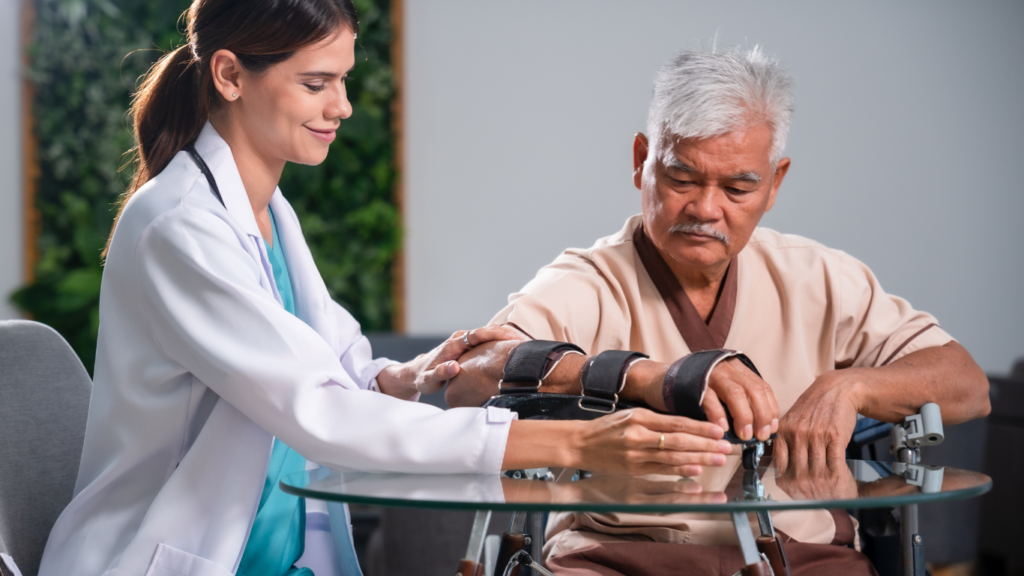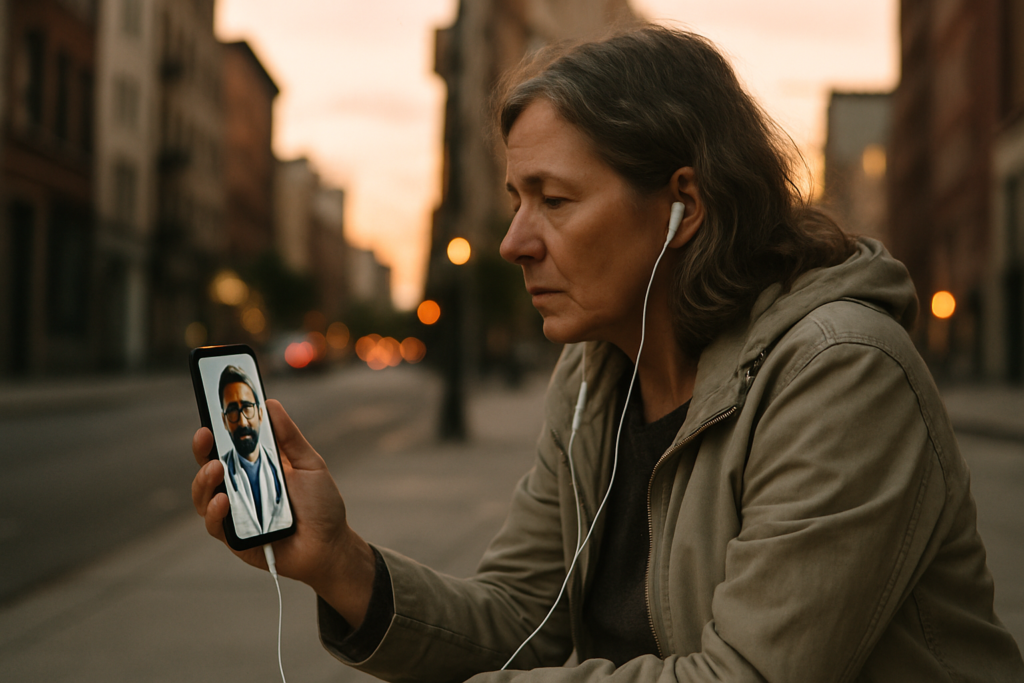Embarking on the journey of stroke recovery can be daunting, but with the emergence of innovative therapies, the path to rehabilitation is evolving. In the realm of healthcare, virtual reality has emerged as a cutting-edge tool in aiding stroke survivors in their recovery process.
As a blogger with a passion for exploring advancements in medical technology, I delve into the realm of virtual reality for stroke recovery and the promising new therapies being implemented. In this article, I’ll discuss how virtual reality is revolutionizing traditional stroke rehabilitation methods, offering personalized and engaging experiences for patients.
From immersive environments to interactive exercises, VR therapy is reshaping the landscape of recovery post-stroke. Join me as we explore the potential of virtual reality in enhancing motor skills, cognitive functions, and overall quality of life for individuals on the road to recovery from a stroke.
Understanding Stroke Recovery
Exploring the journey of stroke recovery reveals the complexity and challenges individuals face post-stroke. Stroke recovery is a process that involves relearning skills and regaining independence in daily activities.
It requires a multidisciplinary approach, involving healthcare professionals, therapists, caregivers, and patients themselves. Rehabilitation plays a crucial role in enhancing physical and cognitive functions after a stroke, aiming to optimize recovery outcomes.
The recovery phase post-stroke varies for each individual based on factors such as the severity of the stroke, overall health condition, and the timeliness of intervention. Some stroke survivors may experience significant progress early in their recovery, while others may face long-term challenges that require ongoing support and therapy.
Understanding the unique needs of each stroke survivor is paramount in tailoring rehabilitation programs to maximize their recovery potential. Incorporating virtual reality into stroke recovery programs offers a novel approach to rehabilitation.
By providing immersive and interactive experiences, virtual reality therapy can engage patients in enjoyable exercises that target specific motor and cognitive functions. The personalized nature of virtual reality environments allows for tailored interventions that address individual challenges, making therapy more effective and motivating for stroke survivors.
Virtual reality technology is transforming the landscape of stroke recovery by offering innovative therapies that complement traditional rehabilitation methods. The integration of virtual reality not only enhances the recovery process but also opens new possibilities for improving motor skills, cognitive functions, and overall quality of life for stroke survivors.
Embracing these advancements in healthcare signifies a positive shift towards more engaging and effective post-stroke rehabilitation strategies.
Applications of Virtual Reality in Stroke Rehabilitation
Virtual Reality (VR) technology has revolutionized the field of stroke rehabilitation, offering innovative solutions for customized therapy programs and motor and cognitive function training.
Customized Therapy Programs
In stroke recovery, personalized therapy programs are crucial for addressing individual needs. Virtual Reality allows for the customization of programs based on the specific requirements of each patient.
By creating immersive and interactive environments tailored to the user’s abilities, VR therapy can target various aspects of recovery, such as motor skills, cognitive functions, and emotional well-being. These customized programs help stroke survivors regain independence by focusing on their unique challenges and goals.
Motor and Cognitive Function Training
Virtual Reality plays a significant role in training motor and cognitive functions post-stroke. Through VR simulations and exercises, patients can engage in repetitive tasks that promote motor function recovery.
The interactive nature of VR tasks challenges cognitive abilities, such as memory, attention, and decision-making, fostering neural plasticity and enhancing overall cognitive function. By incorporating VR technology into rehabilitation sessions, individuals can improve their motor skills and cognitive capacities in a stimulating and engaging manner.
Advantages of Virtual Reality Therapies
Exploring the realm of Virtual Reality (VR) therapies for stroke recovery unveils a myriad of advantages that revolutionize traditional rehabilitation approaches. VR therapies offer targeted and personalized interventions, catering specifically to the individual needs and challenges faced by stroke survivors.
These immersive technologies adapt to varying phases of recovery, accommodating differences in stroke severity, cognitive impairments, and overall health conditions.
- Personalization: As someone undergoing stroke recovery, I benefit from personalized VR therapy programs designed to address my unique deficits and goals. Virtual environments can be customized to simulate real-life scenarios that challenge me at my specific level of ability, fostering progress and motivation.
- Increased Engagement: Engaging in VR therapies is not only beneficial for my physical and cognitive rehabilitation but also provides a novel and captivating experience. The interactive nature of VR simulations keeps me motivated and committed to the rehabilitation process.
- Progress Tracking: Through the incorporation of VR technologies in my rehabilitation journey, I can track my progress more effectively. Data from virtual simulations allow me and my healthcare providers to monitor improvements in motor skills, cognitive functions, and overall performance.
- Enhanced Motor Recovery: Immersive VR environments facilitate motor recovery by offering repetitive and task-specific exercises tailored to improve coordination, balance, and fine motor skills. These targeted interventions enhance neuroplasticity and promote functional recovery.
- Cognitive Rehabilitation: VR therapies play a vital role in cognitive rehabilitation by providing stimulating activities that enhance memory, attention, problem-solving, and other cognitive functions. The interactive nature of these exercises promotes brain plasticity and cognitive enhancement.
- Accessibility and Convenience: Integrating VR therapies into stroke recovery programs provides accessibility and convenience for individuals unable to access traditional rehabilitation facilities. Virtual sessions can be conducted remotely, bridging the gap in healthcare delivery and increasing treatment adherence.
- Motivation and Confidence Building: Participating in VR therapies instills a sense of achievement and empowerment, boosting my motivation and self-confidence throughout the recovery process. The positive reinforcement from accomplishing tasks in virtual environments translates into real-world improvements.
By harnessing the advantages of Virtual Reality therapies, stroke survivors like myself can embark on a transformative rehabilitation journey that enhances recovery outcomes, promotes independence, and ultimately improves the overall quality of life.
Challenges and Considerations in Implementing VR Therapies
Addressing the challenges and considerations in implementing Virtual Reality (VR) therapies for stroke recovery is crucial for maximizing their effectiveness in rehabilitation programs.
- Technical Complexity: Ensuring that the VR technology is user-friendly and easily adaptable for stroke survivors with varying levels of technological familiarity is essential.
- Cost and Accessibility: Securing funding for VR equipment and ensuring its availability in healthcare facilities to make it accessible to a broader range of stroke patients is a significant consideration.
- Training and Support: Providing adequate training to healthcare professionals on how to administer VR therapies effectively and offer technical support to address any issues that may arise during therapy sessions is imperative.
- Customization and Monitoring: Tailoring VR programs to meet the specific needs and capabilities of individual stroke survivors, as well as implementing systems to monitor progress and adjust therapy plans accordingly, are key challenges.
- Integration with Traditional Therapies: Integrating VR therapies seamlessly with traditional rehabilitation methods to create a comprehensive and cohesive treatment plan requires careful consideration and coordination among healthcare providers.
- Ethical and Safety Concerns: Addressing ethical considerations related to patient confidentiality, data security, and ensuring the safety of stroke survivors during VR therapy sessions is vital for maintaining trust and compliance.
By acknowledging and effectively managing these challenges and considerations, the integration of VR therapies in stroke recovery programs can lead to more personalized, engaging, and impactful rehabilitation experiences for stroke survivors, ultimately contributing to better outcomes and quality of life.
Future Perspectives of Virtual Reality for Stroke Recovery
Moving forward, I envision a promising future for the utilization of Virtual Reality (VR) in stroke recovery. As VR technology continues to advance rapidly, the prospects for enhancing rehabilitation outcomes for stroke survivors are ever more exciting.
Integrating VR into personalized recovery programs not only offers innovative solutions but also addresses existing challenges in traditional therapy approaches. I believe that future developments in VR applications tailored for stroke recovery will focus on increasing accessibility and affordability.
By streamlining the technical complexity and reducing costs associated with VR systems, more stroke survivors can benefit from these cutting-edge interventions. Additionally, advancements in VR software and hardware will enable greater customization to meet the unique needs of each individual undergoing rehabilitation.
The integration of VR therapies with conventional rehabilitation methods is another area that holds immense promise. By combining the benefits of VR technology with established therapeutic approaches, such as physical and occupational therapies, we can create comprehensive and synergistic treatment regimens for stroke survivors.
This integration can lead to more holistic recovery experiences, targeting both physical and cognitive functions simultaneously. Looking ahead, ethical and safety considerations in the use of VR for stroke recovery will be paramount.
As the technology evolves, ensuring the ethical deployment of VR interventions and maintaining patient safety are critical aspects that must be carefully navigated. I anticipate that future research will focus on establishing best practices for the ethical use of VR in rehabilitation settings, alongside robust safety protocols to minimize potential risks.
The future of Virtual Reality in stroke recovery holds immense potential to revolutionize rehabilitation practices and improve outcomes for individuals recovering from strokes. By overcoming current challenges, enhancing accessibility, integrating with traditional therapies, and ensuring ethical and safe implementation, VR has the power to transform the landscape of stroke recovery, offering hope and progress to survivors on their journey to recovery.



